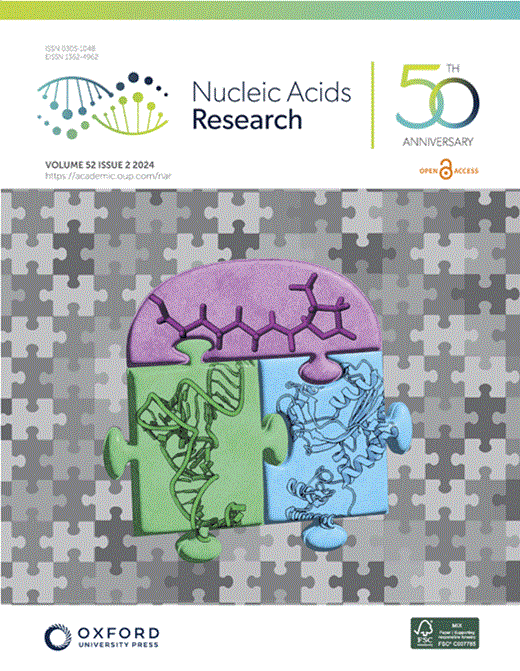Conjugation to a transferrin receptor 1-binding Bicycle peptide enhances ASO and siRNA potency in skeletal and cardiac muscles.
IF 16.6
2区 生物学
Q1 BIOCHEMISTRY & MOLECULAR BIOLOGY
引用次数: 0
Abstract
Improving the delivery of antisense oligonucleotides (ASOs) and small interfering RNAs (siRNAs) to skeletal and cardiac muscles remains a pivotal task toward the broader application of oligonucleotide therapeutics. The targeting of myofibers and cardiomyocytes via conjugation of ASOs and siRNAs to ligands that bind the human transferrin receptor 1 (TfR1) has gathered significant interest in recent years. However, the selection of ligands with low molecular weight and optimal biophysical and binding properties is crucial to maximize the potential of the TfR1 ligand-conjugated antisense (LICA) technology. Here, through effective combination of phage display and peptide medicinal chemistry, we identified and characterized a bicyclic peptide (Bicycle® molecule BCY17901), with a molecular weight of ∼2 kDa, that binds human TfR1 with high affinity and specificity. Conjugation to BCY17901 improved ASO and siRNA potency in skeletal and cardiac muscles of human TfR1 knock-in mice, after either intravenous or subcutaneous administration. Furthermore, single-nucleus RNA sequencing showed that conjugation to BCY17901 enhanced ASO activity in myonuclei of different muscle fiber types. Importantly, we demonstrated good translatability of our TfR1-targeting platform in skeletal and cardiac muscles of nonhuman primates. Our results offer great promise toward potential future applications of low-molecular-weight Bicycle LICA therapeutics for the treatment of diseases affecting skeletal muscle and heart.与转铁蛋白受体 1 结合的 Bicycle 肽共轭可增强 ASO 和 siRNA 在骨骼肌和心肌中的效力。
本文章由计算机程序翻译,如有差异,请以英文原文为准。
求助全文
约1分钟内获得全文
求助全文
来源期刊

Nucleic Acids Research
生物-生化与分子生物学
CiteScore
27.10
自引率
4.70%
发文量
1057
审稿时长
2 months
期刊介绍:
Nucleic Acids Research (NAR) is a scientific journal that publishes research on various aspects of nucleic acids and proteins involved in nucleic acid metabolism and interactions. It covers areas such as chemistry and synthetic biology, computational biology, gene regulation, chromatin and epigenetics, genome integrity, repair and replication, genomics, molecular biology, nucleic acid enzymes, RNA, and structural biology. The journal also includes a Survey and Summary section for brief reviews. Additionally, each year, the first issue is dedicated to biological databases, and an issue in July focuses on web-based software resources for the biological community. Nucleic Acids Research is indexed by several services including Abstracts on Hygiene and Communicable Diseases, Animal Breeding Abstracts, Agricultural Engineering Abstracts, Agbiotech News and Information, BIOSIS Previews, CAB Abstracts, and EMBASE.
 求助内容:
求助内容: 应助结果提醒方式:
应助结果提醒方式:


